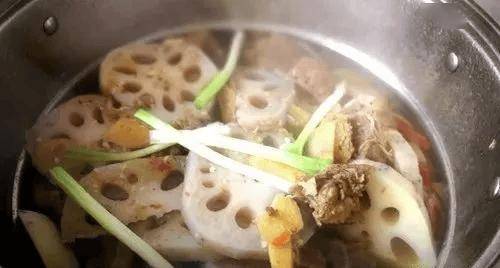Follow us to avoid getting lost
Autumn is a great time to eat lotus root. The lotus root available during this period is the freshest and sweetest. Whether it’s stir-fried, mixed in salads, or in soups, it is beloved by many people. However, if you think it’s just delicious, you’re completely mistaken; the nutritional benefits of lotus root should not be underestimated.
The “Compendium of Materia Medica” refers to it as “spiritual root,” and it is folklore that it is the “doctor of the poor.” Many nutritionists also recommend that people regularly eat lotus root.
It is rich in protein, starch, vitamins, iron, copper, potassium, dietary fiber, and tannins. Regular consumption can strengthen the spleen and stomach, detoxify and beautify the skin, cool blood and heat, and enhance immunity, making it especially beneficial for both adults and children.
Benefits of eating lotus root in autumn
01
Strengthens spleen and stimulates appetite
Lotus root contains mucilage proteins and dietary fiber, which can help reduce fat absorption in the body. Additionally, lotus root has a natural fragrance that can stimulate the appetite.
02
Clears heat and cools blood
The “Classic of Herbal Medicine” states that fresh lotus root is “sweet and cold, capable of cooling blood and stopping bleeding, and clearing heat from the stomach.” Fresh lotus root is cold in nature and sweet in taste, which helps clear heat, cool blood, stop bleeding, and dispel stasis. It is beneficial for treating symptoms caused by excess internal heat, such as thirst, coughing blood, nosebleeds, and blood-streaked phlegm.
03
Nourishes the body
Lotus root is rich in protein, carbohydrates, and vitamins, as well as various minerals like iron, calcium, and potassium, providing significant nutritional benefits. Traditional Chinese medicine believes that cooked lotus root is warm in nature and sweet in taste, capable of strengthening the spleen and stimulating appetite while nourishing the spirit and boosting energy.
04
Moistens intestines and alleviates constipation
Lotus root contains abundant dietary fiber and mucilage proteins that can bind with bile salts and cholesterol from food, thereby reducing fat absorption. It also promotes gastrointestinal motility, speeding up the excretion of excess fat and harmful substances, thus helping to lower blood lipids and prevent constipation.
How to eat nourishing lotus root
Lotus root in soup: Clear and moisten dryness
Lotus root and duck both live in water. Duck meat is characterized by being neither hot nor cold, and when paired with the slightly cool nature of lotus root, it clears heat, dispels fire, and moisturizes dryness. Choose fresh lotus root and slightly older duck, pair with black fungus and ginger as seasonings, and simmer for 3 hours before adding salt just before serving.
Old lotus root into powder: Nourishes the stomach and stops diarrhea
Older lotus root, which has a higher sugar content and more fiber, can be made into powder. Though some fiber is lost in this process, it becomes milder in flavor and can greatly help nourish the stomach and alleviate diarrhea, especially suitable for middle-aged and elderly individuals or those with gastric ulcers.
However, after being made into powder, the sugar content will increase, thus raising the calorie content substantially.


